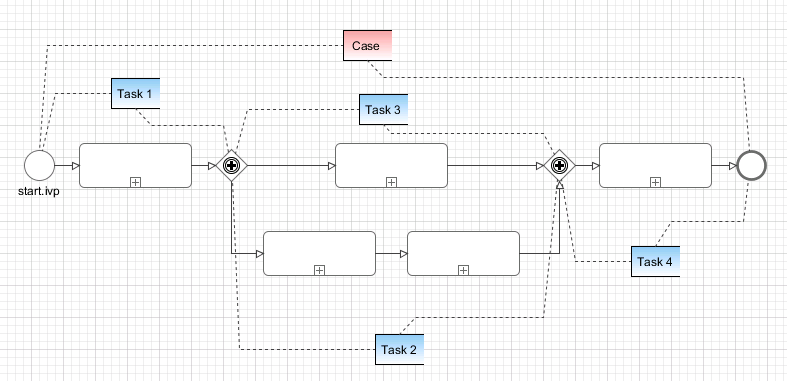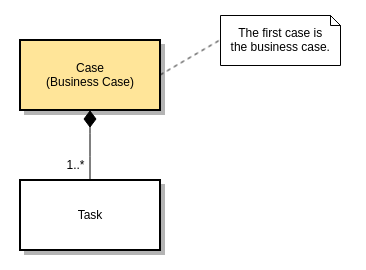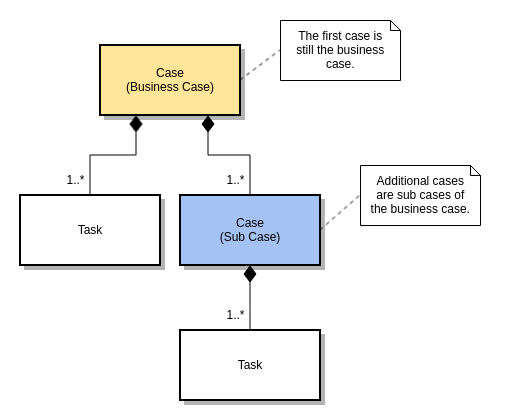Cases and Tasks
The Axon Ivy workflow manages the execution of process instances. A process instance is represented by one Case and one or more Tasks. The Case exists from the first process step until the last process step and holds information about its process instance. The Case is finished when the process is completed. A Case is composed of one or more connected Tasks. Each Task defines a unit of work, which has to be done as one working step. Therefore, a Task is to be executed by a user or role - the Task is assigned to a user or a task. A Task is started by a process-start or a task-switch element and ends at the next task-switch element or at a process-end element.

Multilingual Name and Description of Cases and Tasks
The name and description of a case or task can be defined by using multilingual texts from the CMS. Because of performance and system database space reasons, the name and description are only stored in the configured workflow languages and not for every language available in the current CMS. Workflow languages can be configured using Security System in the Engine Cockpit or, for the Designer, in the Language Settings.
An end users sees the name and description of a case or task in his preferred language if that language is a supported workflow language. If not, the default workflow language is used. Searching for and sorting of cases and tasks uses the same language the end user sees the names and descriptions.
As a process developer, you should configure the main language of your process application as its default workflow language. Add additional workflow languages only if you use mutlilingual texts from the CMS in your case and task inscriptions and if you have configured those texts differently for multiple languages. If your projects support different sets of languages, consider to configure only the common set of languages that all your projects support as workflow languages.
If you add a new workflow language and there are already cases and tasks in your system database, then the name and description in the default workflow language of all your existing cases and tasks are copied to the new language. Therefore, adding a new workflow language can last several minutes and increases the size of your system database. An end user will still see names and descriptions of old cases and tasks in the default workflow language as it is a simple copy. Cases and tasks created after you added a new workflow language will support the new language correctly.
Warning
If you delete a workflow language then all names and descriptions of all existing cases and tasks in that language will be deleted permanently from the system database. Adding the language again later on will not bring the data back!
Business Case
Modern processes are loosely coupled and highly adaptive. Business processes can break out of the standard process flow and trigger asynchronous processes or send a signal that starts various other processes. As every running process creates a new Case, it can get difficult for the workflow users to track the history and context of a Task.
To clarify the workflow view, multiple Cases can be attached to a single Business Case. Triggered or signaled process-starts define in their inscription whether the started Case should be attached to the Business Case of the calling Case. Moreover, any Case can be attached to a Business Case by API. If a case map is started, a Business Case is automatically created. See Workflow execution of Case Map Processes.
The first Case of a process always acts as Business Case (see image ‘First Case’). All Cases attached later to the Business Case are subcases of the Business Case (see image ‘Multiple Cases’).

First Case

Multiple Cases